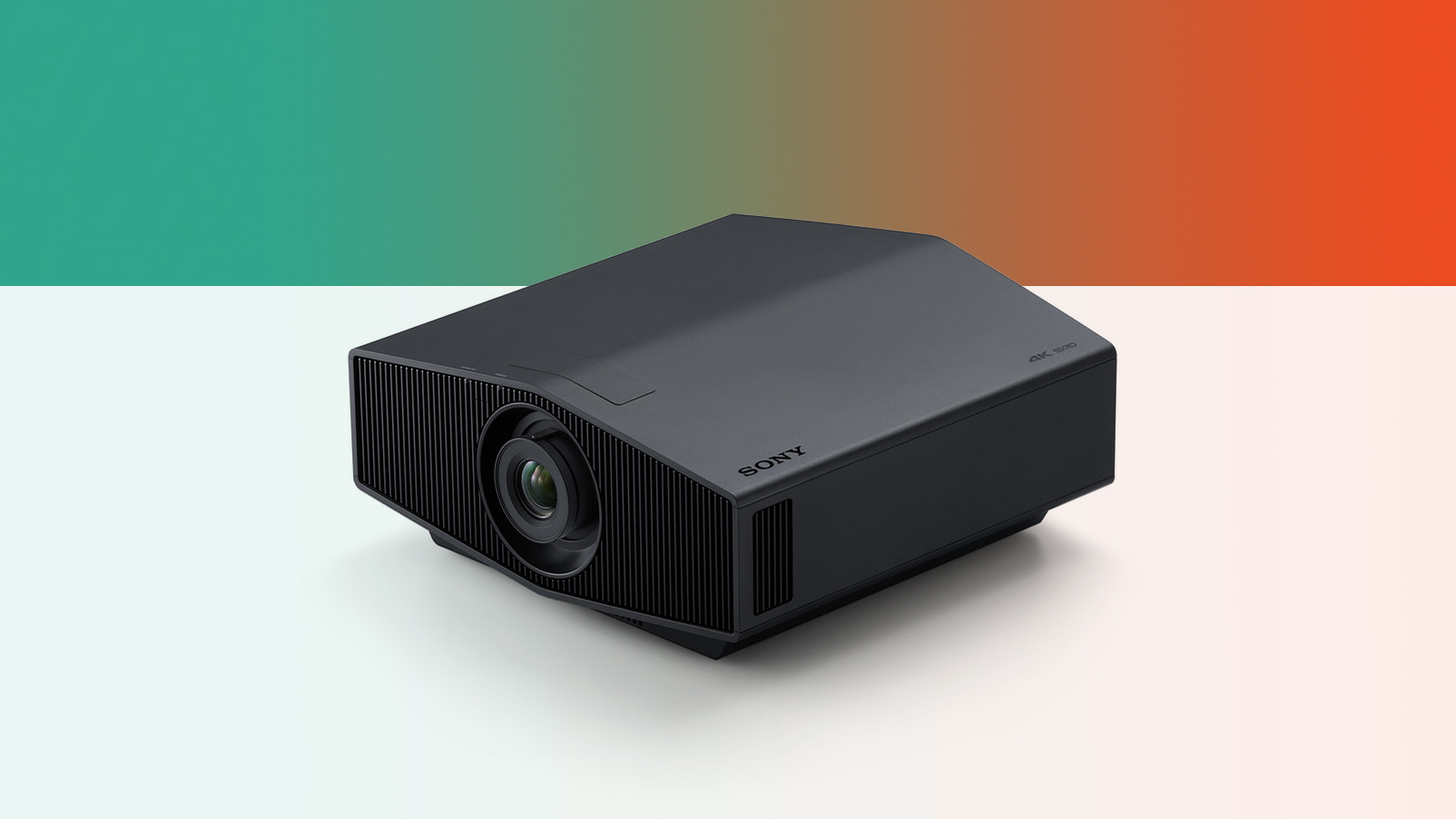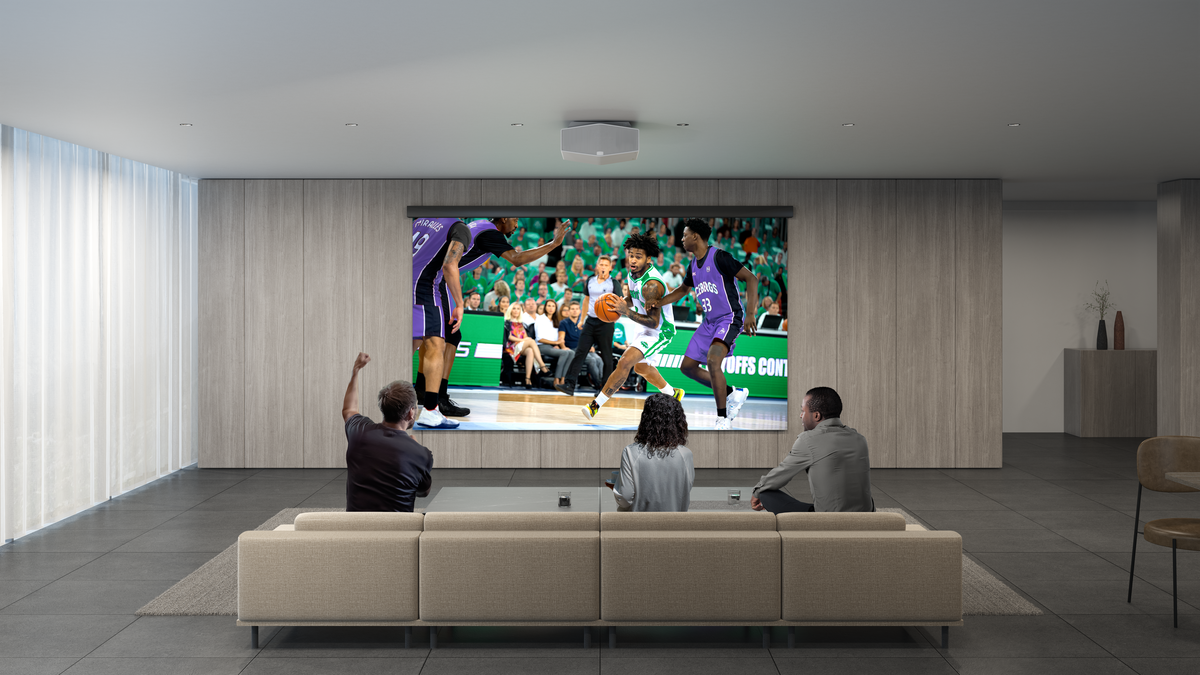Sony's cheaper 4K laser projector should tempt you away from a big TV
Smaller and cheaper – finally a laser projector for more people

Sony has just unveiled its two latest 4K laser projectors, and while one of them is the kind of high-end price we usually expect for these things, the second is both smaller and much more affordable while offering most of the same image quality tech. It makes 4K laser a seriously tempting alternative to a giant-screen TV.
The new small and cheaper option is the called the Sony VPL-XW5000ES. Sony says it's "30% smaller in size and 35% lighter in weight" than the Sony VPL-VW790ES model that its two new projectors are effectively replacing, which means it'll be much easier to fit on a shelf or to ceiling mount, and will generally mean you're more likely to able to accommodate it in a room. Its exact dimensions are 18.1 x 7.9 x 18.6 inches / 460 x 200 x 472mm.
Sony the XW5000ES produces 2,000 lumens of brightness, but achieves this with a 30% reduction in energy use per lumen compared to the older model, meaning it's more efficient (and so will hopefully run cooler and quieter) than previous laser options.
The Sony VPL-XW5000ES will cost $5,999 / £5,999 (AU pricing is tbc) when it releases in "summer 2022" – expect July or August. That's obviously still a very high price compared to what most people pay for a 4K TV, but it's pretty much in line with the best 4K projectors, and – what really interests us – also makes it competitive with the best 85-inch TVs.
The likes of the Samsung QN95B cost more than this for an 85-inch model… and they're obviously only 85 inches. This projector is made to go bigger – much bigger –for the same price.
The Sony VPL-XW7000ES is its big sibling of the VPL-XW5000ES, though it's actually not too much bigger at 18.1 x 8.3 x 20.4 inches / 460 x 210 x 517mm. Its price tag, however, is a good deal bigger at $27,999 / £14,999, which is much more like the prices we're used to seeing for elite laser projectors.

For that extra cash you get a brighter 3,200-lumen output, a new 70mm lens that promises even sharper focus across the whole picture, and a 'Live Colour Enhancer' feature that's designed to give more vivid colors where it can, while intelligently making sure that elements such as skin tone don't become unrealistic.
Get daily insight, inspiration and deals in your inbox
Sign up for breaking news, reviews, opinion, top tech deals, and more.
Both models use the same "world's-smallest" SXRD 0.61-inch panel for projection, with native 4K resolution. They also both include Sony's X1 image processor, which has been a fixture in lots of highly rated Sony TVs. Excellent motion processing and upscaling from HD are two of this processor's hallmarks, but what's maybe most exciting is its 'HDR Remaster' capabilities – it's fantastic at taking SDR material and making it look HDR while keeping realism in the picture. For those with a library of HD Blu-rays, these could well be the best projectors available today.
And you can generally expect top-tier HDR performance from these projectors thanks to them being laser. Much like the best OLED TVs, laser projectors can go totally and genuinely black in areas that need it, meaning you get astounding contrast and range.
Finally, these models even promise to be great for gaming. At 4K 60Hz, Sony says you can expect around 20ms of lag, while in 2K 120Hz Sony says to expect 13ms, which is competitive with the best gaming TVs. The only downside is that you can't do 4K 120Hz – but then gaming TVs don't come in 120-inch sizes, so we'll call it a draw.

Matt is TechRadar's Managing Editor for Entertainment, meaning he's in charge of persuading our team of writers and reviewers to watch the latest TV shows and movies on gorgeous TVs and listen to fantastic speakers and headphones. It's a tough task, as you can imagine. Matt has over a decade of experience in tech publishing, and previously ran the TV & audio coverage for our colleagues at T3.com, and before that he edited T3 magazine. During his career, he's also contributed to places as varied as Creative Bloq, PC Gamer, PetsRadar, MacLife, and Edge. TV and movie nerdism is his speciality, and he goes to the cinema three times a week. He's always happy to explain the virtues of Dolby Vision over a drink, but he might need to use props, like he's explaining the offside rule.